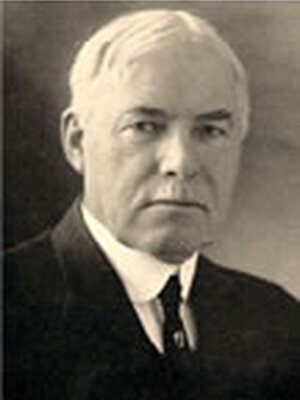
Samuel W. Parr was born in Granville, Illinois, and graduated with a BS from the University of Illinois in 1884. He spent a year in graduate work at Cornell University, from which he received an MS degree in 1885. He held various academic posts until he joined the faculty at the University of Illinois in 1891 as a Professor of Applied Chemistry. He continued in that position until his retirement in 1926. In 1901 he established the curriculum of chemical engineering essentially as it exists today. After the death of A. W. Palmer in 1904, Prof. Parr was director of the laboratory instructional force until the appointment of W. A. Noyes in 1907.
Prof. Parr's chief interest was the chemistry of coal and coal products: he studied their properties and uses from every angle. He supplied industry with practical instruments for use primarily in coal analyses, the Parr Peroxide Calorimeter, the gas calorimeter, the automatic recording gas calorimeter, and the sulfur photometer. His discovery that bituminous coal, after drying below coking temperatures, decomposes with an exothermic reaction when heated to a higher temperature resulted in a uniform and rapid coking process superior to any hitherto known.
His extensive investigation of alloys was rewarded by the discovery of the nonferrous alloy "Illium," of high tensile strength and ductibility, excellent working qualities, and a resistance to corrosion almost equal to that of the noble metals. One of his other important research interests was his solution of the problem of the embrittlement of boiler steel, which resulted in vast savings in industries throughout the country.
Parr founded the Standard Calorimeter Company in 1899 in Champaign, Illinois. Parr had developed a simplified instrument for measuring the heating value of coal at a time when such devices were not generally available. Parr's 'calorie meter' (written and pronounced Calorimeter) and other fuel testing devices were contributing factors in the development of a market for the extensive resources of bituminous coal available in Illinois at a time when most believed that the only useful coal had to come from the eastern United States coal fields. Manufacturing operations of the Company were moved to East Moline, Illinois in 1911. Then, following World War I the company moved to a new facility in Moline, which housed both the calorimeter business and a foundry for producing a line of acid-resistant stainless steels developed by Prof. Parr, primarily for use in Parr calorimeters but marketed to other users as well. In 1933 the name of the company was changed to the Parr Instrument Company and it continues to operate today.
1. University of Illinois Department of Chemistry Development During the Period 1927-1941 1941, 5-45
2. Ind. Eng. Chem. 1925, 17, 985.
3. National Cyclopedia of American Biography; James T. White & Co.: 1921-1984; vol. C, p153.
4. http://www.parrinst.com/